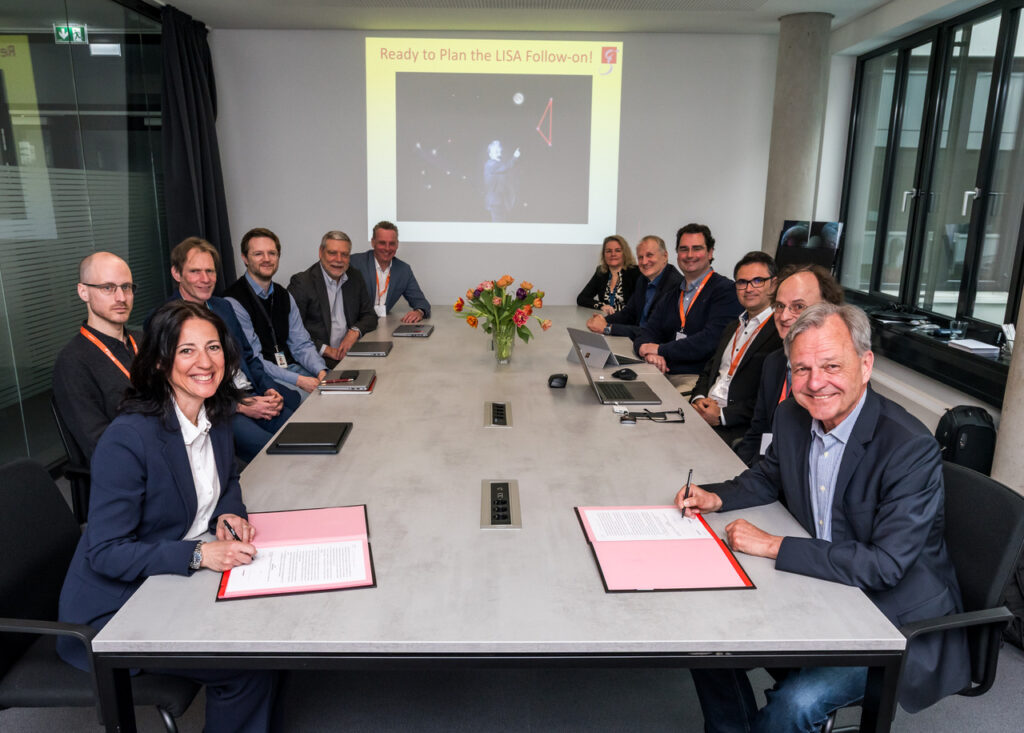Gravitational-wave observations are providing a new view on the Universe: from the high-frequency observations by ground-based facilities, to the tantalising evidence of low-frequency gravitational waves reported by pulsar timing array collaborations in 2023. It is an exciting time for GW astronomy and the LISA space mission will bridge the gap between the high and low frequency. The LISA mission is led by the European Space Agency (ESA) with NASA partnership. Anticipated observations include black hole binaries (supermassive, intermediate mass), Galactic compact object binaries; extreme mass ratio inspirals, early inspiral of stellar-mass black hole binaries, cosmological sources as well as other possible unforeseen sources.
Last year, ESA formally adopted the LISA mission. This crucial milestone marks the transition from study phase to implementation phase. Launch is planned for the mid-2030s.
Why a LISA School?
LISA is a first-of-its-kind mission. The instrumentation and data analysis challenges will require a significant amount of development. Building expertise and tools to address these challenges is essential to ensure the success of the mission and maximise the scientific returns. This LISA School will gather young researchers interested in LISA science to foster collaborations, encourage interactions, and train them in the multidisciplinary aspects of the missions and its science. The recent ESA Adoption makes the coming years opportune time to bring the early career community of LISA together.
Scientific objectives
The key objectives of this LISA school are:
- broaden the knowledge of early-career scientists with lectures on LISA science;
- provide hands-on experience in some of the current LISA software tools;
- present the pioneering LISA instrumental design and methods;
- enable early-career scientists (the future research leaders by the launch of the mission) to meet in person, network, share ideas, and foster collaboration;
- inform early-career scientists on the LISA mission organisational structure and plans;
- develop general skills and a welcoming collaboration environment.
The school will welcome approximately 50 in-person participants. Sessions will be taught by LISA experts (we anticipate approximately 15 expert teachers). When inviting teachers for the school, we have favoured early-career experts and paid special attention to gender representation.
Registration and timeline
Pre-registrations are now open, and will close July 11th at midnight.
The school is limited to 50 students, and will be served on a first-come, first-serve basis. Your registration confirmation will be sent mid-July and payment is expected before end of July.
We do not allow for partial participation, i.e., students are expected to attend the 11 days of school.
Participation fees
Student participation fees for the whole school amounts to EUR 900.
This includes subsistence (from dinner on the day of arrival to lunch on the day of departure), accomodation, and other organization fees (coffee breaks, library, IT space, leisure facilities). It does not include transport to and from Les Houches, or any extra activities.
We plan to support students with limited financial resources; you can apply for this support by filling the “Support Request” field in the pre-registration form.
Les Houches School of Physics
Les Houches is a village located in Chamonix valley, in the French Alps. Established in 1951, the Physics School is situated at 1150 m above sea level in natural surroundings, with breathtaking views on the Mont-Blanc mountain range.
Les Houches Physics School is UAR 2002 run by Université Grenoble Alpes (UGA).
The 5 School Partners are
- UGA, the Institut National Polytechnique (Grenoble-INP),
- the Centre National de la Recherche Scientifique (CNRS),
- the Commissariat à l’Energie Atomique (CEA), and
- the Ecole Normale Supérieure de Lyon (ENS Lyon).
School Website
